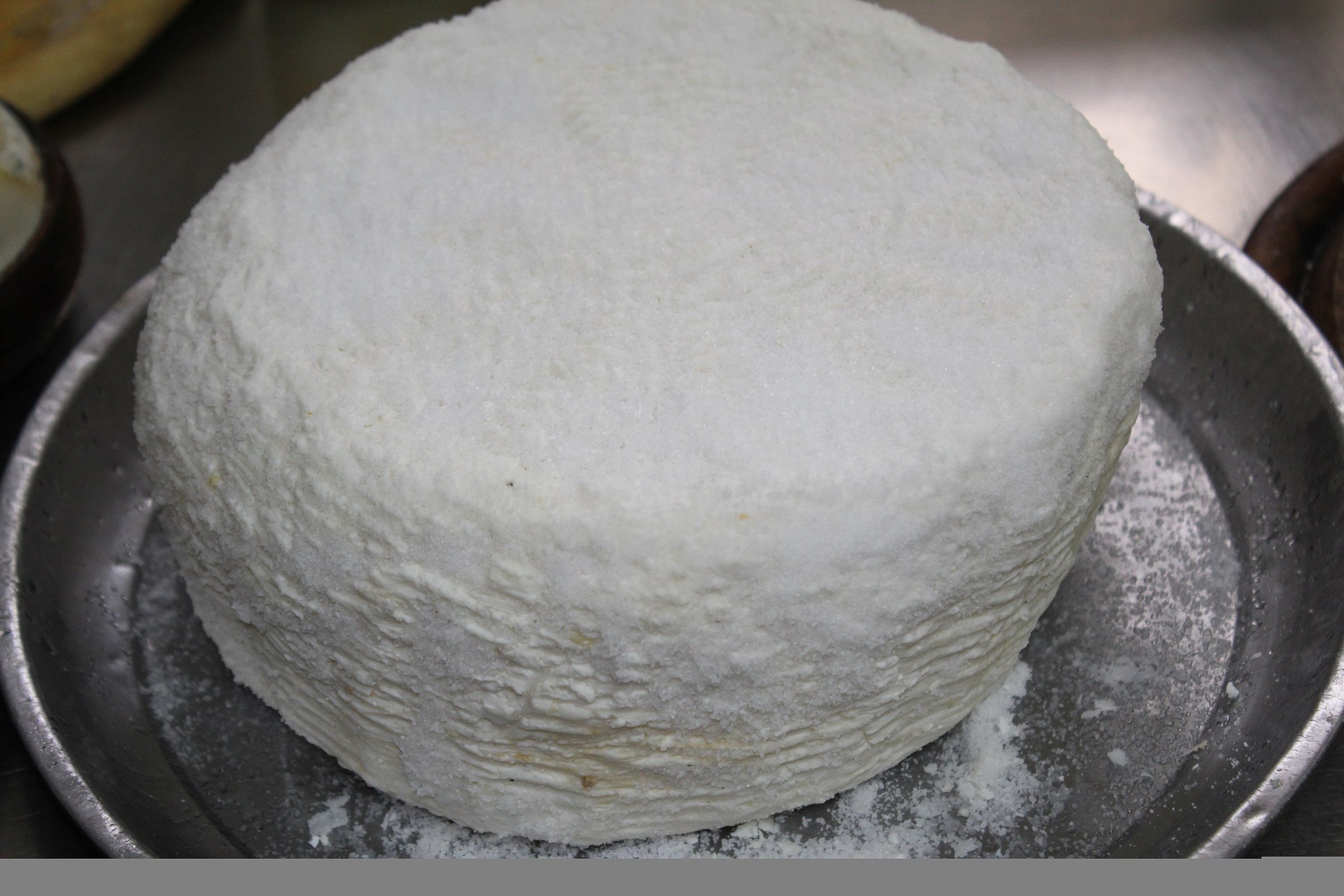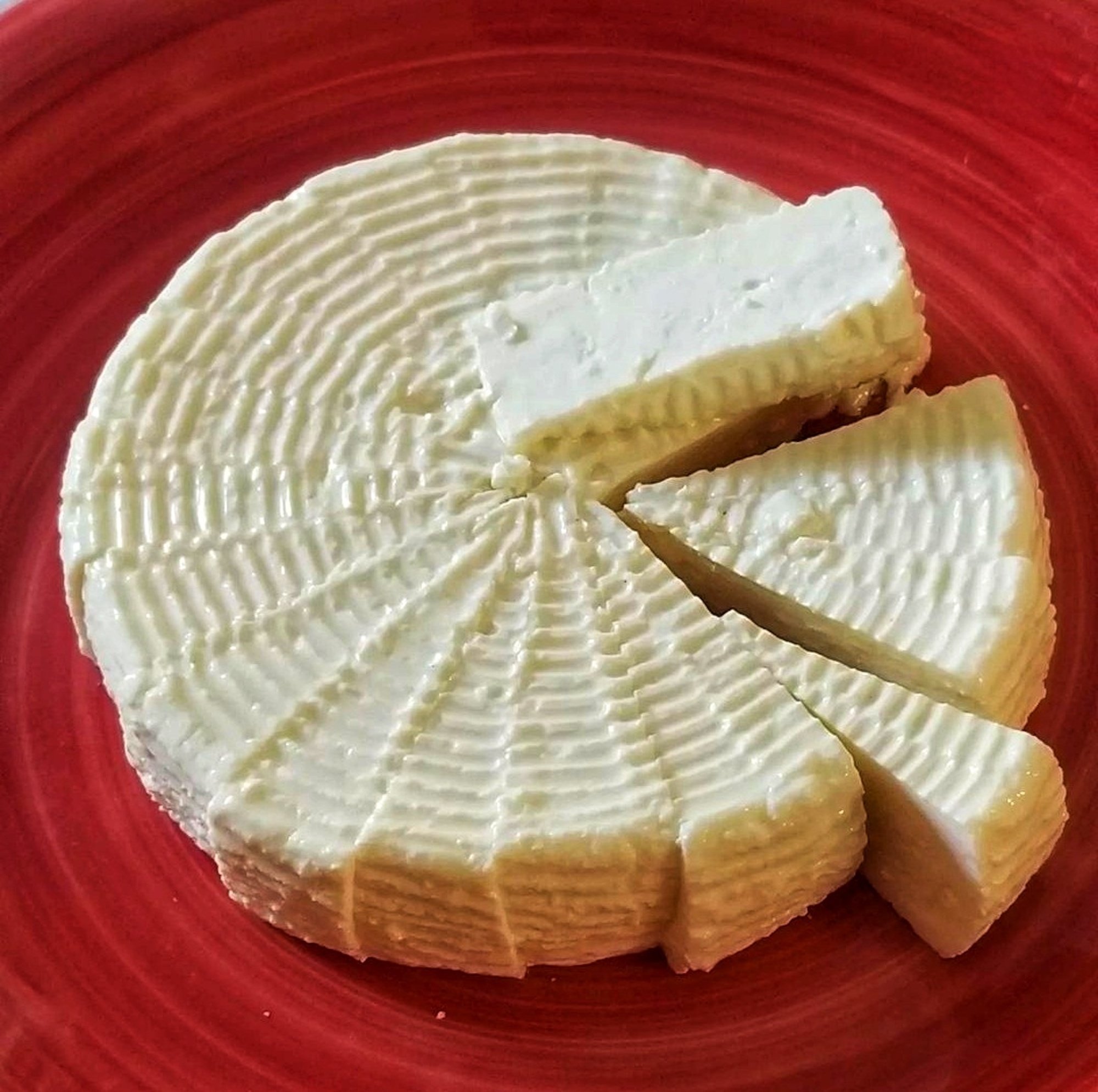What is the Israeli Cheese Tzfat & Why Is It So Wildly Popular?
Tzfat cheese by Evan vasilich is licensed under CC BY-SA 4.0.
In the arid mountains of Northern Israel, you’ll find the ancient town of Safed. Established about 250 BCE in the region of Galilee, it’s known for the beautiful vistas, rich history, preponderance of artists and for being the home of two very famous family-owned dairies, the creators of tzfat, a wildly popular cheese.
The transliterations of the Hebrew name of the cheese can be spelled zefat, tzfat, safed, safad, tzafatit and so many more, but no matter how it’s spelled in English, it is a true Israeli original.
What is Tzfat?
Tzfat cheese was first created in 1840. The original is a brined, hand-made, pasteurized sheep’s milk cheese, although it is also now made with cow’s milk too. It’s molded in rattan baskets woven from local reeds. As it drains the basket creates a distinctive pattern. It can be purchased fresh or slightly aged in small, rindless wheels and always in brine. Mass produced versions are made in plastic baskets to recreate the distinct pattern.
While the cheese is normally not flavored or adorned, there are always variations, and the one you’ll see the most will be coated with nigella (aka black cumin) seeds for a hint of onion and a little texture.
History of Tzfat
Within the town of Safed, there are two major makers who do this process. Should you ever find yourself there, they’re worth a visit.
The HaMeiri dairy, where the cheese was first created, was founded in 1840. It is strictly kosher and is recognized as the oldest artisan dairy in modern Israel. It was there that Meir Arzoni made the cheese for the first time after he immigrated to the area from what is now Iran.
The story of the Kadosh family and their micro-dairy sounds extraordinary but is not entirely unusual considering the history of the area. A 12-year-old boy left home, and walked across the Middle East looking for a better life. He arrived in Safed and started making goat and sheep’s milk cheeses. Eight generations later, his descendants still run the dairy and accompanying shop. Visitors are welcome to try their tzfat (gvina tzfatit) that’s been aged for six months and watch it being made.
How Tzfat is Made
Tzfat Cheese at Kadosh Dairy by Evan vasilich is licensed under CC BY-SA 4.0.
The sheep’s milk is pasteurized (all cheese in Israel is pasteurized. No exceptions.) at low temperatures. Casein, lactic bacteria and calcium chloride are also added. The cheese is rennet free, making some versions kosher. A small amount of salt is added for additional flavor and preservation.
The cheese is a mild, less salty version of a brined white cheese such as feta. The sheep at the HaMeiri dairy roam in open pastures, are milked by hand and occasionally are treated to music to keep them calm. The area has a classic Mediterranean climate and flora that the sheep graze on freely.
Zefat photo credit @yoreshet
Tzfat Tasting Notes
This is a very mild cheese with a subtle grassiness from the sheep’s milk. Cow’s milk versions are milder still. The cheese has a fat content around 5% and is slightly briny. The paste is tight and only has a few small holes. It is not rubbery and should be a snowy white. Imagine a firmer, somewhat salty cream cheese. It’s the cucumber of cheeses.
Tzfat Pairings
Tzfat and toast
As a mild cheese, tzfat is almost always served at Israeli breakfasts, in a similar fashion to a Turkish breakfast. You will find the cheese alongside an assortment of everyday dishes of tomato and cucumber salad, hard boiled eggs, smoked fish, olives and sesame seed coated Jerusalem bagels.
At lunch and in the evening, the cheese is also often whipped and served as a dip, added to salads, used as the base for sweet and savory cheesecakes and other pastries including flaky cheese borekas.
The mild cheese is just as easily sliced as it is crumbled, which makes it ideal for thick vegetarian sandwiches. Essentially, it can be used in the place of feta, halloumi – it does not melt well - and paneer. The harder, aged version can also be used as a grating cheese for soups or pasta.
Without any discernible sheeps-milk funk or herbal notes, the cheese can pair with almost any light wine. It goes particularly well with rose and pinot grigio. Of course, it is much more likely to be served along with a cup of tea.
While not usually found in the U.S. this is a terrific cheese to enjoy on your next trip to Israel. If you can’t get to Safed, larger brands are sold in all major grocery stores.




